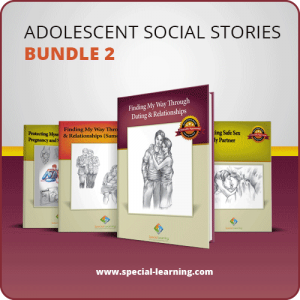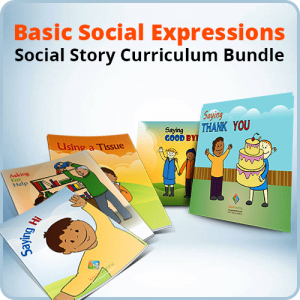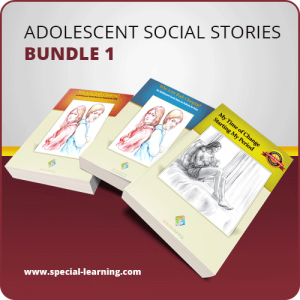What are Social Stories?
Social stories are individualized short stories that depict a social situation that your child affected by autism may encounter. These social stories are used to teach communal skills through the use of precise and sequential information about everyday events that your child may find difficult or confusing, thus preventing further anxiety on the part of your child.
Using social stories to help children with autism was first introduced by Carol Gray, who was a teacher and an educational consultant, in 1991. She is now the director of the Gray Center for Social Learning and Understanding in Grand Rapids, Michigan, and a published author of several books regarding social stories and autism.
Key points in writing a social story
Social stories have seven key components. Keep these in mind when composing a story for your child.
Descriptive sentence – in these sentences the “who, what, where, and why” details are emphasized, making it recognizable and easier for your child to relate as to when the situation actually occurs.
Directive sentence –here you include instructions as to how your child should appropriately respond to a specific situation.
Perspective sentence – this should describe one of your child’s possible responses or feelings to a given situation.
Affirmative sentence – states a common value or opinion. Here, you can emphasize the important points by referring to a law or rule the learner should understand.
Cooperative sentence – describe the actions or possible help of the people around your child based on his or her response to the situation.
Control sentence – actions or responses created by your child, to aid in remembering the strategies that work for him or her.
Partial sentence –this sentence should encourage your child to make a guess about the next step in the given situation. This is usually represented by a blank in the story. An example is “I will feel_______when I get my ice cream (Partial)”
Here is an example of a social story with the sentence components identified: (www.autismcanada.org)
When we go to the shoe store,
There will be many shoes to choose from. (Descriptive)
I might not know which shoes I like. (Perspective)
That is okay with everyone. (Affirmative)
I can hold onto my string while I decide. (Control)
When I decide about the shoes, I will tell the grown-up. (Directive)
The grown-up will go get the shoes for me. (Cooperative)
Do keep in mind that social stories are written in the first-person point of view or the child’s point of view. It should be in the present tense. You have to take into account your child’s level of vocabulary and comprehension. If your child cannot read yet, make use of pictures in telling the story. Initially, read the story with your child and make sure your child understands the story. You can do this by making a checklist or doing a role play with your child regarding the story. As the child familiarizes with the story, the need of reading it with her may lessen and will eventually lead to your child remembering the story without even reading it.
References: www.thegraycenter.org
Copyright © by Special Learning Inc. All right reserved.
No part of this article may be reproduced in any manner whatsoever without written permission except in the case of brief quotations embodied in critical articles and reviews. For information, contact Special Learning Inc., at: contact@special-learning.com








